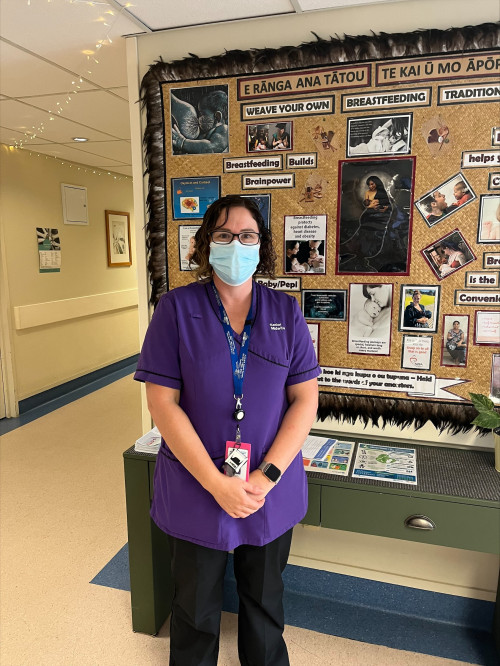
Hawke’s Bay District Health Board is joining midwives worldwide in celebrations of the International Day of the Midwife tomorrow (Thursday 5 May).
Acting Director of Midwifery Catherine Overfield, of Hawke’s Bay DHB, says this day is a chance to acknowledge and thank the 50 hospital midwives employed by the DHB, and the many self-employed midwives (Lead Maternity Carers) within community settings.
“All New Zealand midwives are required to undertake a robust, four-year degree, which sets them up with a unique skillset and equips them to provide care in a variety of settings such as home and hospital,” Catherine says.
“A midwife’s role includes prescribing, ordering and interpreting blood tests and scans, as well as managing any emergencies that might eventuate,” she says.
“The midwife’s scope of practice places them in an ideal position to impact positively on health and wellbeing in the first 1,000 days of life.”
Catherine says DHB midwives and Lead Maternity Carers (LMCs) work closely together.
“DHB and self-employed midwives share meetings twice a month where they can provide support and knowledge sharing for each other,” Catherine says.
“That enables them to support each other through the care of women with complex pregnancies and births within the hospital environment, for example, women with diabetes, requiring a caesarean birth or premature labour,” she says.
“This teamwork made all the difference through the recent challenges of COVID where space and resources were limited.”
Vanessa Bryant joined the DHB as a Clinical Midwifery Coordinator in 2014, and loves the variety of working in the Maternity ward at Hawke’s Bay Fallen Soldiers’ Memorial Hospital, which is located right next to the Emergency Department (ED).
“The best part of the job is you don’t actually know what you are going to get,” Vanessa says.
Vanessa says the Ministry of Health’s Voluntary Bonding Scheme, which pays up to $3,500 per year for five years for midwives who choose to work in hard-to-staff areas such as Hawke’s Bay, was a huge financial help.
“You have to do three years before you qualify for your first payment, which helps pay off your student loan,” she says.
“The bonding was a blessing.”

Catherine Overfield says it’s admirable to see the innovation of Hawke’s Bay midwives who are trying new approaches to care, such as putting Māori cultural practices at the heart of their care models.
“As an example of that leadership, three Hawke’s Bay midwives opened a midwifery practice, Tapuhi Kura, in March, where they are using Māori practices such as mirimiri, karakia and rongoa as part of their daily care approach.”
One of the practice founders is Kiley Clark, who last year was Māori Midwifery Consultant at the DHB.
Kiley says, “The DHB leadership role enabled me to build the rapport and networks with other Māori midwives, including with Charlene Eparaima and Crissy Coromandel, and together the three of us started Tapuhi Kura.
“Our main priority at Tapuhi Kura is caring for our whānau Māori, and trying to re-adjust some of the statistics and inequities that exist,” she says.
Both Kiley and Vanessa say building relationships with whānau and seeing families created are highlights of the midwifery career.
“That first initial two minutes after the birth when people are like – ‘Holy moly I did it!’ – that’s pretty cool,” Vanessa says.






Post your comment
Comments
No one has commented on this page yet.